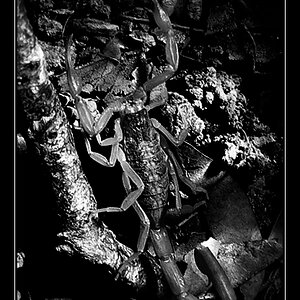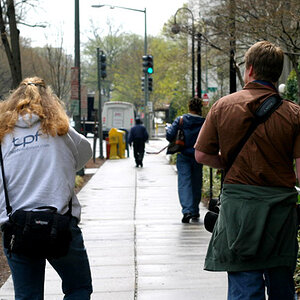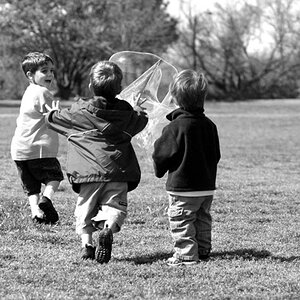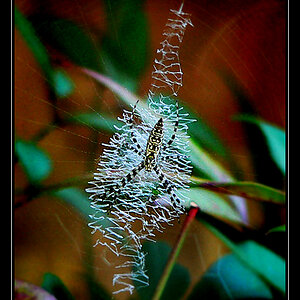inTempus
TPF Noob!
- Joined
- Dec 15, 2008
- Messages
- 3,692
- Reaction score
- 4
- Location
- Indiana
- Can others edit my Photos
- Photos OK to edit
In every mode except manual mode your camera will automatically set itself to get a proper exposure. If you're in aperture priority and set your camera to f/11, it will adjust your shutter speed accordingly to get a proper exposure. If you're in shutter priority and set your shutter speed to 1/250 the camera will automatically set your aperture to the proper setting to get a proper exposure. In manual mode you will have a little indicator in the bottom of your view finder. In a Canon it looks something like this:
*****^*****
The ^ is showing you the optimal setting. If you adjust your aperture and shutter speed this ^ will move left and right. If it's left of center like this:
**^********
Then your image will be underexposed.
If it's right of center like this:
********^**
Then your image will be over exposed.
Get it in the center and your image should be properly exposed, or pretty close.
*****^*****
The ^ is showing you the optimal setting. If you adjust your aperture and shutter speed this ^ will move left and right. If it's left of center like this:
**^********
Then your image will be underexposed.
If it's right of center like this:
********^**
Then your image will be over exposed.
Get it in the center and your image should be properly exposed, or pretty close.




![[No title]](/data/xfmg/thumbnail/32/32161-a5da499a329f1fae945778aac75d4442.jpg?1619735234)

![[No title]](/data/xfmg/thumbnail/40/40284-f59f6230f0d5b9eacf977f8b0392f087.jpg?1619739407)
![[No title]](/data/xfmg/thumbnail/41/41800-9fad93555f178073cae2f303c5ef4e23.jpg?1619739897)
![[No title]](/data/xfmg/thumbnail/32/32630-d78de94d84be2acf57d5e0923482b4da.jpg?1619735552)
![[No title]](/data/xfmg/thumbnail/36/36392-ee7dc51c9be334b9979003f6316db12e.jpg?1619737547)


![[No title]](/data/xfmg/thumbnail/36/36396-f8e84def7352af726df923054b86284f.jpg?1619737549)
